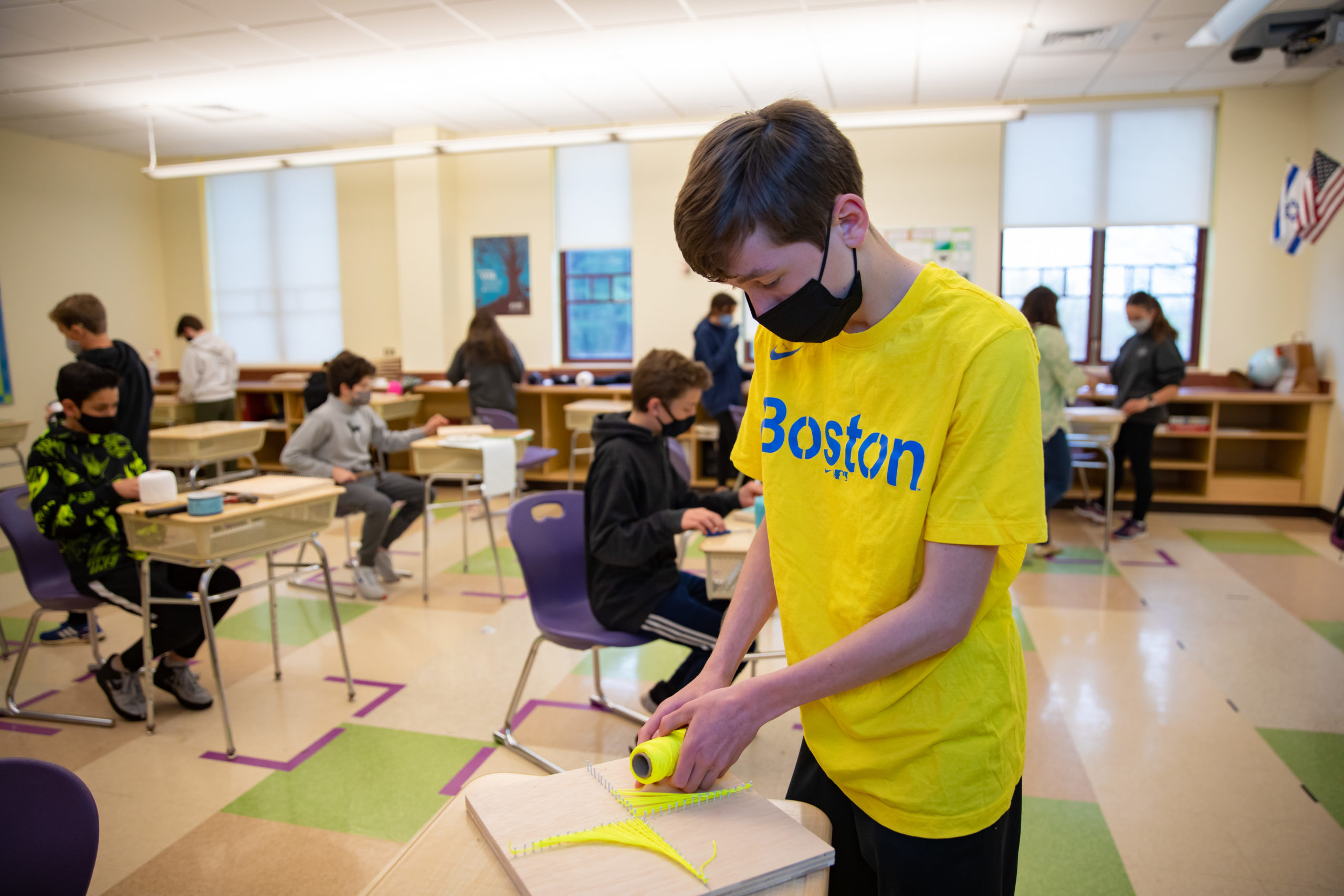When did you start at Rashi?
I started in 2005. 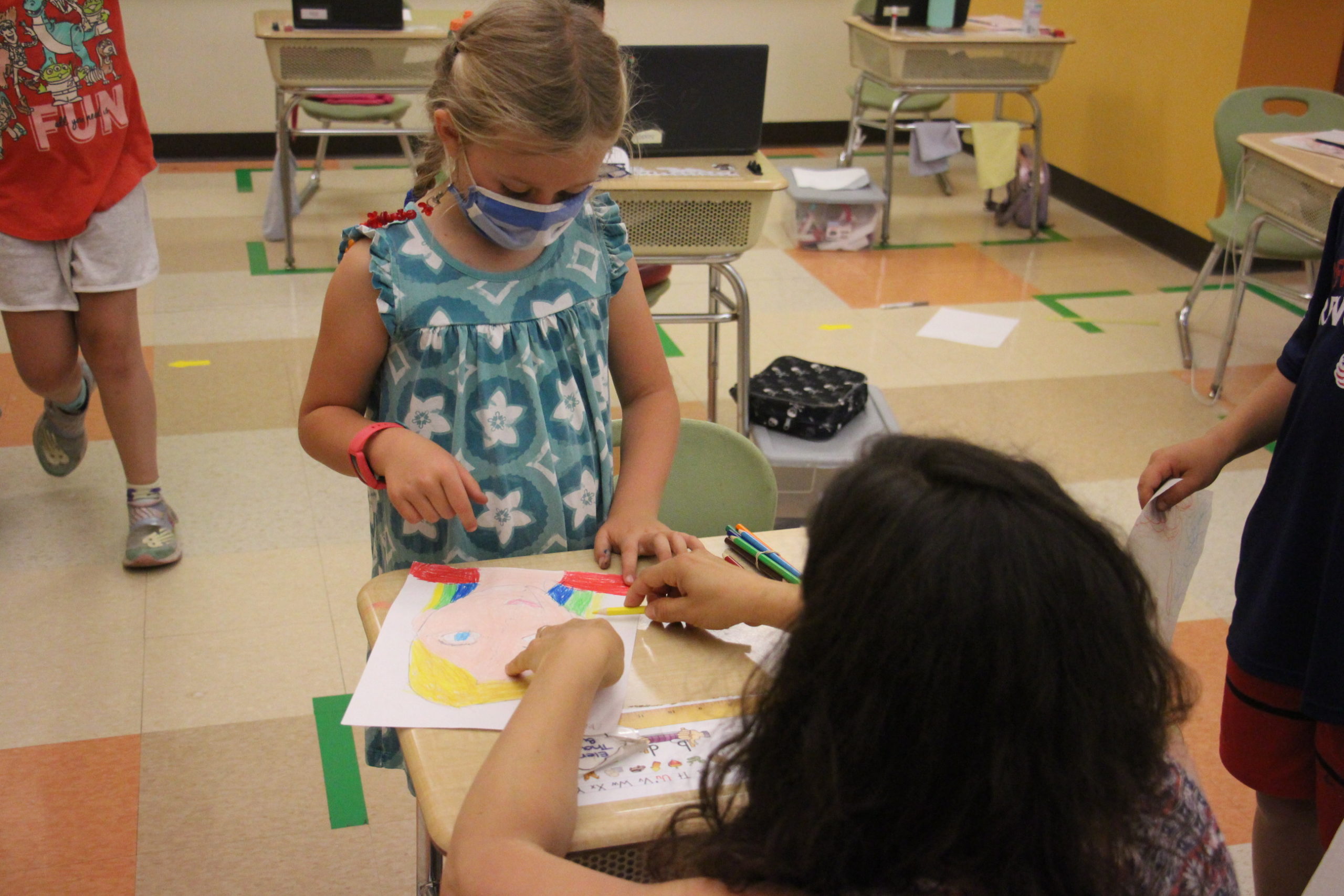
What’s your background in?
My undergraduate degree is in Art History, and I also majored in Spanish, and I did the Education Program at Brandeis too. I had planned to go into museum education, and did not. Life took me a different direction. I had trouble finding jobs in museum education that would support rent in Boston. I ended up running after-school programs for the City of Cambridge then going back to graduate school for Arts in Education at the Harvard Graduate School of Education. For a couple years I was in arts administration. I was running a community arts center and an arts summer camp. But I just couldn’t sit at a desk any longer. I was hiring all these teaching artists and looking over their curricula and supervising them and realizing: Wait! this is what I want to be doing! I kind of applied to Rashi on a whim, having no classroom teaching experience. They took a chance on me. [During my Rashi interview my interviewer] shared, “There are people who go into teaching art for the art. And there are people who go into teaching art for the teaching. Which one are you?” I said ‘I’m going into it for the teaching.’ She said, “That’s exactly what I wanted to hear. You’re hired!”
I’m going into it for the teaching</
What’s a special unit you teach?
All the units are special to me. I wrote the K-8 curriculum from the ground up over many years, and I’m always trying new things. I can’t teach a unit if I don’t feel like it’s special to me- I feel like in order to really engage the kids, they need to see that I love what we’re doing, too I love the Passover projects. I think that they are things that families value. It doesn’t just go in a cardboard box in the attic, it goes on their Passover table every year. I’ve had families tell me that they had to make a separate table just for their Judaica! The kids will see the Passover projects in the art room, and the little guys say ‘when do we get to make that?’ On the other end, every Passover, the 8th graders get to pick one project to make as a flashback project and they often pick a Passover project and get to make it again!
Favorite artist to teach?
I love teaching artists especially when they have an interesting life story, or when they didn’t have a traditional path towards becoming an artist. A lot of people don’t really know how many things an artist actually does. There are artists who make art for a living. Or artists who are graphic designers, or who are professors. It’s good for kids to know you don’t have to be someone who is always good at traditional fine art like painting and drawing to be an artist. Or someone who wanted and tried throughout their life to be an artist.
Favorite type of art to practice yourself?
I do a little bit of almost everything. I love watercolor, mosaic, and all kinds of fiber arts. Lately I’ve been really into “craftivism,” creating art to express my personal and political views.
How do you respond to current events through your teaching?
It’s always been a part of my curriculum. Now I am auditing my curriculum for diversity and representation. While I taught a lot of artists of color in the past, now I will include more examples explicitly of how they faced racism or discrimination in their lives, make that social justice content part of the lesson and discuss it with the kids–whether it’s quotes or the diving deeply into content of the art. I do also have explicit social justice content with the kids. For example in 7th grade we do social justice collages. The kids chose a social justice issue of their choice, and create a collage and advocacy of their point of view. 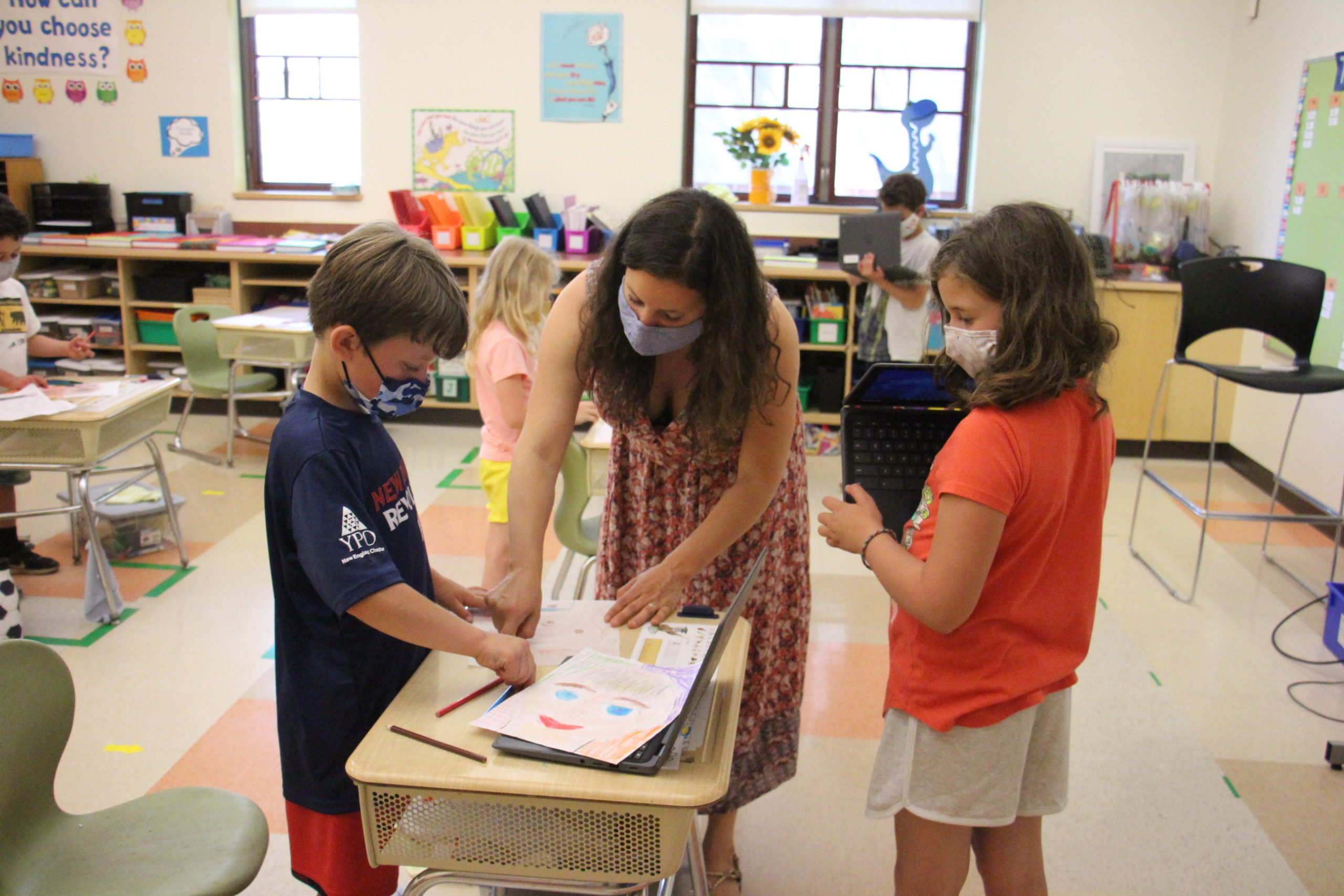
Now I am auditing my curriculum for diversity and representation.
Who is a teacher that inspired you?
Jessica Hoffman Davis. She started and was basically the founder of the Arts in Education program at the Harvard Graduate School of Education. I had the privilege of having her as a professor in the program she founded. In addition to being amazingly charismatic, she had this really interesting mix of having experience in developing theory and putting it to practice. She had been an artist, she had been a teacher, she had done research with some really accomplished and important people. 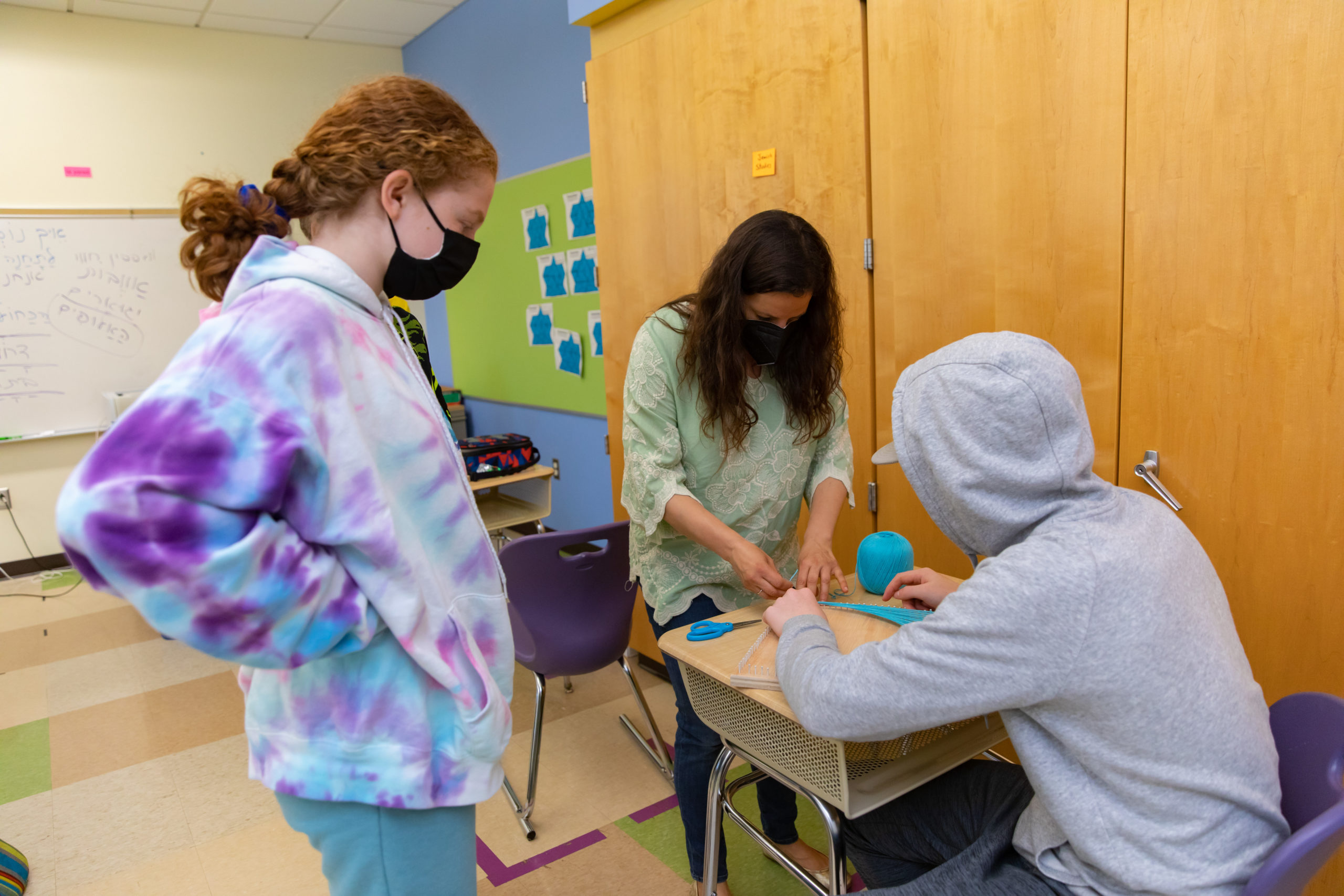 She’s the one who taught me how to ask important questions and how to teach our students to ask important questions. She was having students write their own essential questions in 2004, before that was widely taught. When I heard about the pedagogical approach of Essential Questions, I thought: ‘Oh! Jessica Hoffman Davis questions!’ There was a lot of theory behind her teaching, balanced with a lot of passion. She was a huge advocate for the arts in the school. She taught me how to advocate for the arts.
She’s the one who taught me how to ask important questions and how to teach our students to ask important questions. She was having students write their own essential questions in 2004, before that was widely taught. When I heard about the pedagogical approach of Essential Questions, I thought: ‘Oh! Jessica Hoffman Davis questions!’ There was a lot of theory behind her teaching, balanced with a lot of passion. She was a huge advocate for the arts in the school. She taught me how to advocate for the arts.
Describe your teaching philosophy
It’s all about finding a good balance between creativity and technique. You have to know how to use materials in order to invent a new way to use them. You have to know the rules in order to bend the rules.
There are projects I do that are more based in technical proficiency. I’ll give the kids a warm-up lesson, or an initial introduction to the materials, and then I’ll say, here’s how to use this technique, and here are some parameters of the assignment- and I’ll offer a lot of options to accommodate all kinds of learners and all levels of skill and interest. From kid to kid, the projects never end up looking the same. For example, in 3rd grade every kid is making a mask. But the individuation starts with them answering a series of questions about their masks, for example: Who would wear their mask? What kind of special event or ceremony would they wear it for? What do the different animals or patterns in the mask symbolize? They all have different answers, and this is a springboard into the design process. 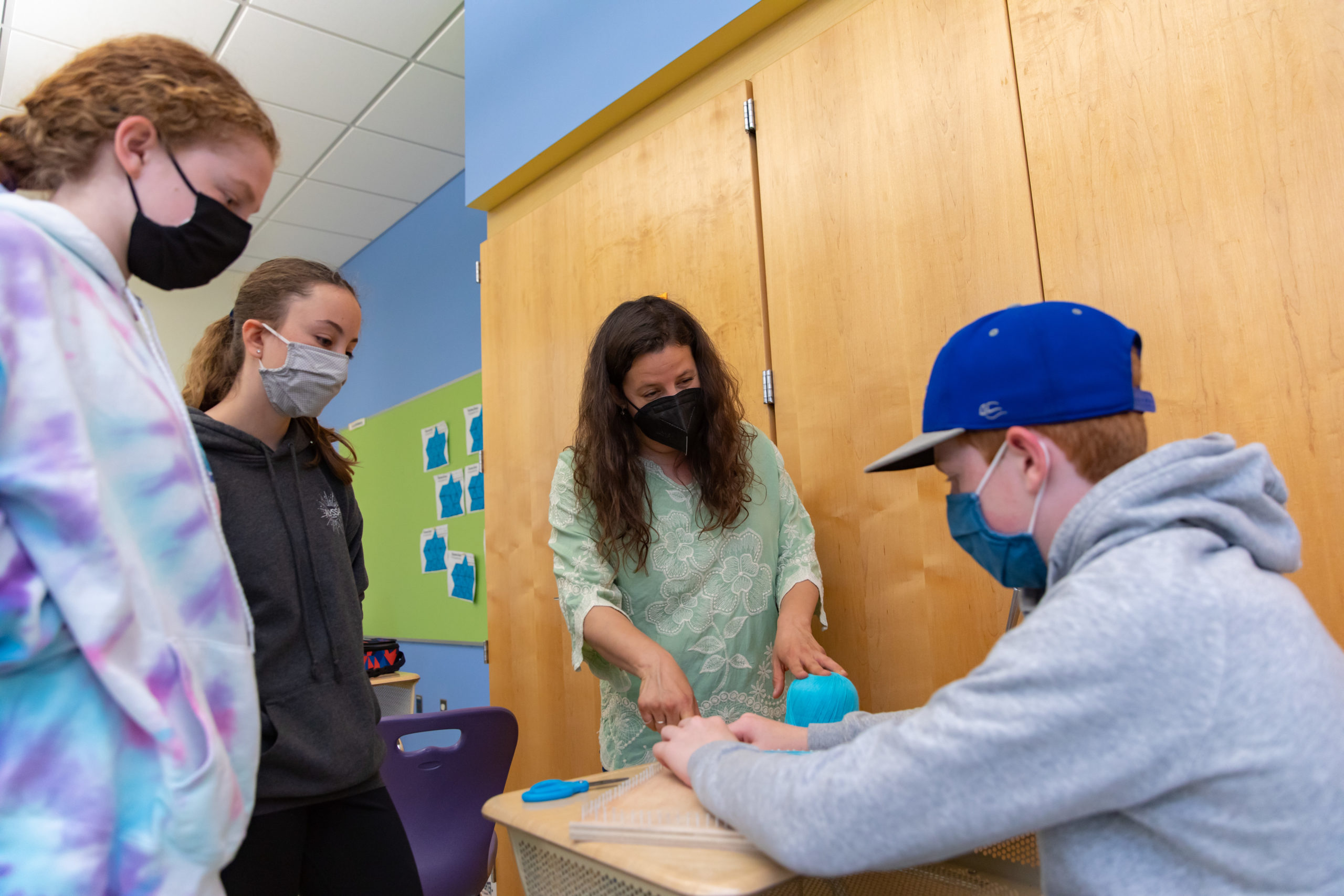 It’s all about finding a good balance between creativity and technique. You have to know how to use materials in order to invent a new way to use them. You have to know the rules in order to bend the rules.
It’s all about finding a good balance between creativity and technique. You have to know how to use materials in order to invent a new way to use them. You have to know the rules in order to bend the rules.


